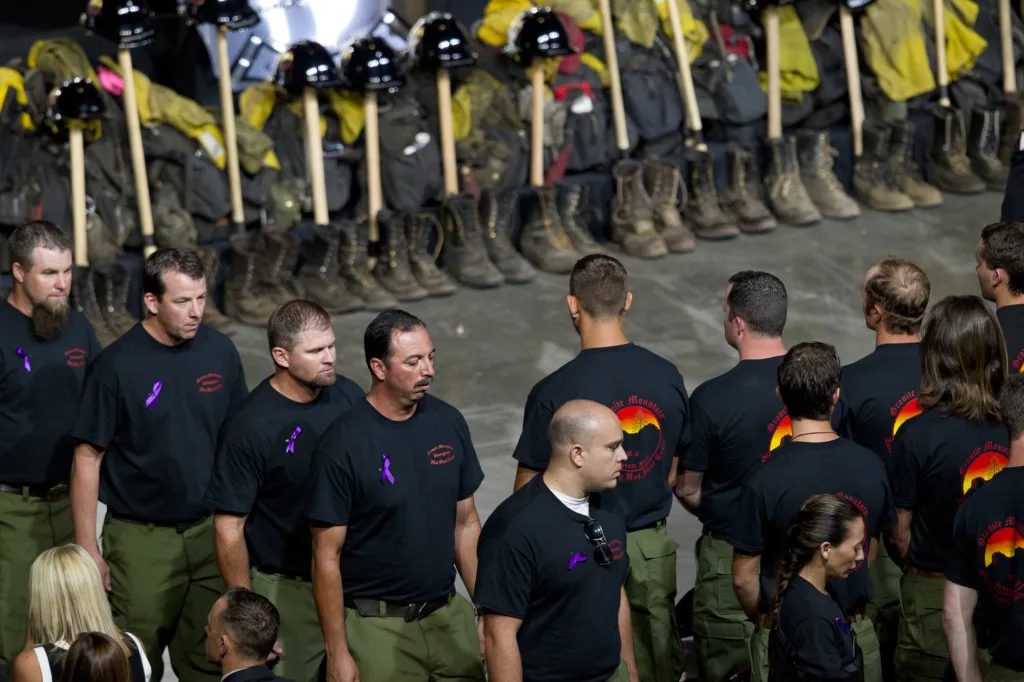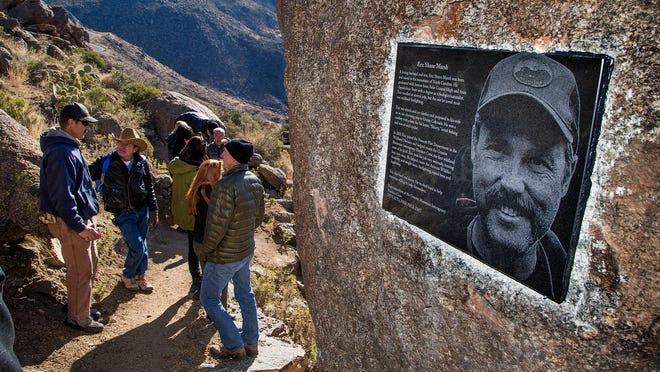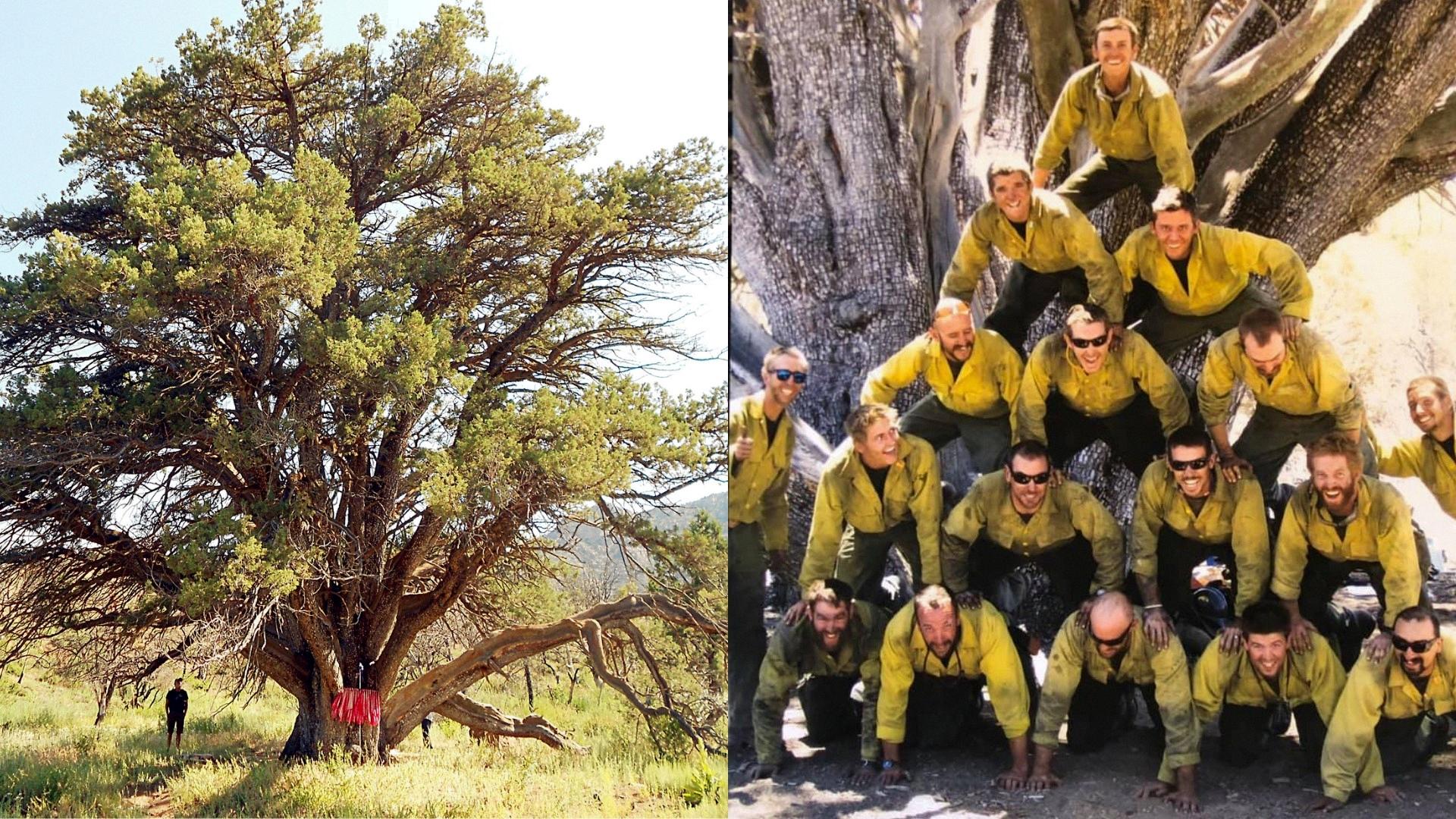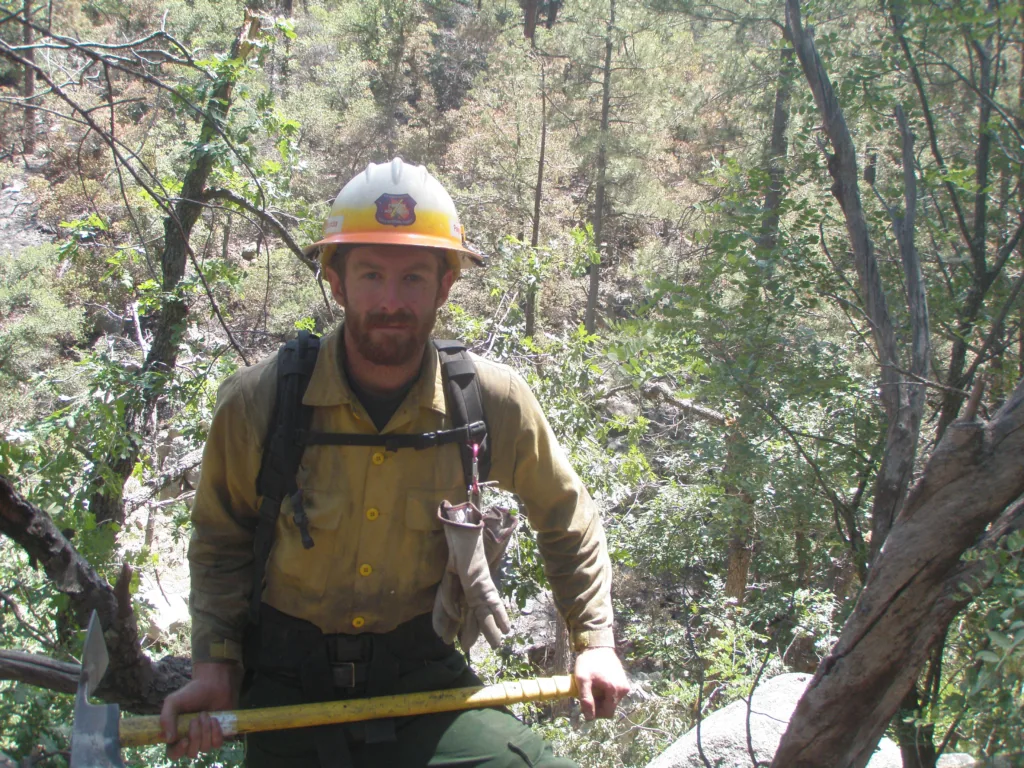On June 30, 2013, the Granite Mountain Hotshots faced one of the deadliest wildfires in U.S. history. Of the 20-man crew, 19 members lost their lives battling the fire. The tragedy shocked the nation and left many wondering how such a disaster could occur. In this blog post, we will explore the events leading up to the Granite Mountain Hotshots’ deaths and the lessons learned from this tragedy.
The Yarnell Hill Fire started on June 28, 2013, as a result of a lightning strike in the area. The fire quickly spread due to high winds and dry conditions. By June 30, the fire had grown to over 8,000 acres, and the Granite Mountain Hotshots were dispatched to the area to help fight the fire.
The hotshots were an elite team of firefighters who were specially trained to fight wildfires. They were known for their bravery, skill, and dedication to their jobs. On the day of the tragedy, the hotshots were working to create a firebreak in a box canyon to keep the fire from spreading further.
At some point, the hotshots decided to leave the safety of a black area and descend into the canyon. No one knows why they made this decision, and the film about the tragedy doesn’t try to guess. However, it is clear that the fire was too intense and was moving too quickly for their shelters to protect them. Temperatures exceeded 2,200 degrees F, and extreme turbulent air conditions made the situation even more dangerous.
Following the tragedy, federal officials announced that they intended to replace the current fire shelter design. However, in the case of the Granite Mountain Hotshots, no fire shelter could have protected them. This tragedy highlighted the need for better training, equipment, and communication among firefighters.
Lessons learned from the tragedy:
1. Safety should always be the top priority when fighting wildfires. Firefighters should never put themselves in unnecessary danger.
2. Communication is key. Firefighters need to communicate effectively with each other and with their supervisors to ensure that everyone is aware of the current situation and any potential dangers.
3. Training and equipment are essential. Firefighters need to be properly trained and equipped to handle the challenges of fighting wildfires.
4. There is always a risk when fighting wildfires. Firefighters need to be aware of the risks and take steps to minimize them as much as possible.
The tragedy of the Granite Mountain Hotshots will never be forgotten. However, it has led to important changes in the way we fight wildfires. By learning from this tragedy, we can work to prevent similar disasters in the future.
Cause of Death for Granite Mountain Hotshots
On June 30, 2013, the Granite Mountain Hotshots crew was fighting the Yarnell Hill Fire caused by a lightning strike. Unfortunately, all but one of the crew members died during the incident. The cause of death for the Granite Mountain Hotshots was due to the intensity of the fire and the speed at which it was moving. The crew was overrun by flames in a box canyon, and their fire shelters were unable to protect them from the intense heat and flames. As a result, the crew tragically lost their lives while bravely fighting the Yarnell Hill Fire.

The Ineffectiveness of Fire Shelters for the Granite Mountain Hotshots
The Granite Mountain Hotshots were a group of elite firefighters who tragically lost ther lives in the Yarnell Hill Fire in 2013. The fire shelters they carried were designed to provide protection from radiant and convective heat, but unfortunately, they were not effective in this instance.
The Yarnell Hill Fire was an extremely intense and fast-moving wildfire that produced temperatures exceeding 2,200 degrees Fahrenheit. In addition to the high temperatures, the fire created extreme turbulent air conditions, making it difficult for the firefighters to find a safe place to deploy their fire shelters.
Despite the best efforts of the Granite Mountain Hotshots, the fire overran their position, and all 19 firefighters perished. The fire shelters they carried were not designed to withstand the extreme heat and turbulence of this type of fire, and as a result, they were unable to provide adequate protection.
It’s worth noting that fire shelters are an important tool for firefighters, and they have saved countless lives over the years. However, they are not a guarantee of safety in all situations. In the case of the Yarnell Hill Fire, the extreme conditions simply overwhelmed the shelters, and tragically, there was nothing that could be done to save the lives of the Granite Mountain Hotshots.
Number of Deaths in Granite Mountain Hotshots
On June 30, 2013, the town of Yarnell experienced a devastating wildfire that claimed the lives of 19 members of the Granite Mountain Hotshots. The Granite Mountain Hotshots were a highly trained team of firefighters, known for their bravery and expertise in battling wildfires.
Tragically, when the wildfire in Yarnell took an unexpected turn, the Granite Mountain Hotshots were caught in its path. Despite their best efforts, 19 members of the team lost their lives while battling the blaze.
The loss of the Granite Mountain Hotshots was a devastating blow to their families, the firefighting community, and the nation as a whole. Their bravery and sacrifice will never be forgotten.
To summarize, 19 members of the Granite Mountain Hotshots lost their lives on June 30, 2013, while battling a deadly wildfire in Yarnell.
The Reasons Behind the Granite Mountain Hotshots’ Departure From the Black
The reason why the Granite Mountain Hotshots decided to leave the safety of a black area and descend into the canyon remains unknown. There are several possible factors that could have influenced their decision, but none of them has been confirmed.
One possibility is that they may have been tying to protect nearby homes and structures from the advancing fire. The hotshots were known for their dedication to saving lives and property, and it’s possible that they felt a strong sense of responsibility to defend the area.
Another possibility is that they may have been attempting to find a safer route out of the area. As experienced firefighters, the hotshots would have been well aware of the dangers of being trapped by a wildfire. It’s possible that they believed they could find a way to safety by moving through the canyon.
Despite these theories, there is no concrete evidence to suggest why the hotshots made the decision to leave the black area. The film about their tragic deaths, “Only the Brave,” does not attempt to speculate on their motivations.
In any case, the decision to leave the safety of the black proved to be fatal for the hotshots. The fire quickly overtook them, and 19 of the 20 firefighters lost their lives in the tragedy. The incident remains one of the deadliest wildfires in modern U.S. history.
The Fate of the Hotshots
On June 30, 2013, the Yarnell Hill Fire in Arizona killed 19 members of the Granite Mountain Hotshots team. There have been questions abot whether the Hotshots burned or suffocated during the tragic incident.
According to the official report from the Arizona State Forestry Division, the 19 Hotshots died from burns and inhalation injuries. The report states that the Hotshots were caught in a “flame front” that overtook them. This means that the fire burned over them, and they were exposed to extremely high temperatures and toxic smoke.
The report also notes that some of the Hotshots attempted to deploy their fire shelters, which are designed to protect firefighters from flames and radiant heat. However, the shelters were not able to withstand the intense heat and flames of the Yarnell Hill Fire.
It’s important to note that wildfires can be unpredictable and dangerous, and even highly trained firefighters like the Hotshots can be at risk. In fact, firefighting is consistently ranked as one of the most dangerous professions in the United States.
The 19 members of the Granite Mountain Hotshots team died from burns and inhalation injuries after being caught in a “flame front” during the Yarnell Hill Fire.

Source: azcentral.com
Burial Site of the 19 Hotshots
The 19 members of the Granite Mountain Hotshots who lost their lives while fighting the Yarnell Hill Fire are not buried in a single location. Each of the fallen firefighters was laid to rest in their hometowns, which are spread throughout the United States.
Some of the firefighters were buried in Arizona, including Andrew Ashcraft, Travis Carter, Dustin Deford, Christopher MacKenzie, and William Warneke. Others were buried in their home states, such as Kevin Woyjeck in California, and Sean Misner in California, where he grew up.
The firefighters were honored with individual memorials in their respective communities, and their names are also inscribed on a memorial at the state park that was created in their honor. The Granite Mountain Hotshots Memorial State Park features a trail that leads to the site where the firefighters died, allowing visitors to pay their respects and learn about the tragedy that took place on June 30, 2013.
The Fate of the Granite Mountain Hotshots
The bodies of the Granite Mountain Hotshots were found after they were overrun by the Yarnell Hill Fire on June 30, 2013. The 19 members of the hotshot crew were tragically killed while fighting the wildfire in Yavapai County, Arizona. The firefighters were part of an elite team of wildfire specialists who are specially trained to battle wildfires in remote areas. Their deaths were a devastating loss for their families, friends, and colleagues, as well as the firefighting community as a whole.
The bodies of the 19 hotshots were recovered from the site of the fire and takn to Phoenix for autopsies. The autopsies were conducted to determine the cause of death and to provide information that could be used to improve firefighting safety procedures in the future. The autopsies were also intended to provide closure for the families of the fallen firefighters.
The Granite Mountain Hotshots were a highly respected group of firefighters who were known for their bravery and dedication to their work. They were involved in some of the most challenging and dangerous firefighting operations in the country, and their loss was felt keenly by everyone in the firefighting community.
Despite the tragedy of their deaths, the legacy of the Granite Mountain Hotshots lives on. Their sacrifice has inspired a renewed commitment to improving firefighting safety and to honoring the memory of those who have given their lives in service to their communities.
Brendan McDonough’s Survival of the Fire
Brendan McDonough was able to survive the fire that killed 19 of his fellow firefighters because of his role as the crew’s lookout. On the day of the fire, McDonough was stationed a half mile away from the fire, where he was tasked with monitoring fire behavior and weather changes. This position allowed him to escape the flames shooting as high as 50 feet that engulfed the rest of the crew.
McDonough’s survival is a testament to the importance of having a lookout on firefighting crews. The lookout is responsible for monitoring changing weather conditions and evaluating the behavior of the fire, which can provide critical information for the rest of the crew. Without a lookout, firefighters may be caught off guard by sudden changes in the fire’s behavior, putting thir lives at risk.
It is also worth noting that McDonough’s survival was not solely due to his position as lookout, but also to his quick thinking and ability to follow established safety protocols. In the face of a rapidly spreading wildfire, it is essential for all members of a firefighting crew to remain vigilant and follow established safety procedures to minimize the risk of injury or death.
Brendan McDonough was able to survive the fire that killed 19 of his fellow firefighters because of his role as the crew’s lookout and his adherence to established safety protocols. His survival underscores the importance of having a lookout on firefighting crews and the crucial role that safety procedures play in minimizing the risk of injury or death in dangerous firefighting situations.
The Mistake Made by the Granite Mountain Hotshots
The Granite Mountain Hotshots made a crucial mistake during the Yarnell Hill Fire in 2013. According to investigations, the Hotshots’ division supervisor, Eric Marsh, violated several basic wildfire rules that resulted in the tragic loss of 19 firefighters.
One of the rules that Marsh violated was not knowing the precise location of the fire. This lack of knowledge put the crew in a dangerous situation and made it difficult for them to effectively fight the fire. Another mistake was not having a spotter observe the fire. A spotter is a critical member of the firefighting team who helps identify any potential hazards and keeps the crew safe.
Additionally, Marsh led his team through thick, unburned vegetation near a wildfire. This action put his crew at risk because the unburned vegetation could easily ignite and trap the crew. These basic wildfire rules are in place to keep firefighters safe and ensure that they have the best chance of successfully fighting a fire.
The investigation into the Yarnell Hill Fire concluded that Marsh’s failure to follow these basic rules was a contributing factor to the tragedy that occurred. It serves as a reminder of the importance of adhering to these rules and ensuring that all members of the firefighting team are aware of them.

Source: 12news.com
The Youngest Granite Mountain Hotshot
The Granite Mountain Hotshots were a team of highly trained firefighters who tragically lost their lives battling the Yarnell Hill Fire in 2013. Among the team was Robert Caldwell, who was the youngest member of the Hotshots at the time of his death. Caldwell was just 23 years old when he perished alongside his fellow Hotshots.
It is worth noting that all of the Hotshots were incredibly skilled and dedicated firefighters, with ages ranging from 21 to 43. While Caldwell was the youngest member of the team, each of these individuals made an immense contribution to their profession and to the safety of their community. Their loss was a devastating blow not only to their families and friends, but to the firefighting community as a whole.
The History of the Oldest Hotshot Crew
The history of hotshot crews dates back to the mid-20th century. However, there are conflicting sources rgarding the oldest hotshot crew. According to some sources, the Del Rosa and Los Padres Hotshots were the first hotshot crews established in 1946. On the other hand, some sources claim that the Del Rosa and El Cariso Hotshots were the first, established in 1947.
Regardless of which crew was the first, hotshot crews have been an integral part of firefighting efforts for decades. These crews are highly trained and skilled in wildland firefighting, often working in remote and rugged terrain to contain and extinguish wildfires.
In 1961, the Inter-Regional Fire Suppression (IRFS) program was developed to coordinate firefighting efforts across the Western United States. As part of this program, six 30-man hotshot crews were established. These crews were located in California, Idaho, Montana, Oregon, Washington, and Wyoming.
The oldest hotshot crew is subject to debate, but the important role of hotshot crews in firefighting efforts cannot be underestimated.
Duration of the Yarnell Hill Fire
The Yarnell Hill Fire, which occurred in Arizona, lasted from June 28 to July 10, 2013. During this period, the fire burned an area of approximately 8,400 acres (34 km2). The cause of the fire was attributed to dry lightning. A total of 129 buildings were destroyed during the incident.
The Significance of Hotshots Wearing Yellow
Hotshots are highly trained firefighters who work on the front lines of wildfires. They are responsible for containing and extinguishing the flames, preventing them from spreading and causing further damage. One of the most important aspects of their job is visibility, which is why they wear bright yellow clothing.
Studies have shown that the color yellow is more visible in dark and smoky environments, making it easier for hotshots to see each other and stay safe on the fireline. The bright color also helps them to stand out in the natural surroundings, which can be important when working in areas with dense foliage or other obstacles that mght obscure their visibility.
In addition to their yellow clothing, hotshots also wear personal protective equipment (PPE) that includes fire-resistant gear, helmets, gloves, and boots. This gear is designed to protect them from the extreme heat and flames they encounter while working on the fireline.
The yellow clothing worn by hotshots is an important safety feature that helps to keep them visible and protected while they work to contain and extinguish wildfires.

Is Brendan McDonough Still a Firefighter?
Brendan McDonough is no longer a firefighter. He was a member of the Granite Mountain Hotshots, a highly trained crew of firefighters who battle wildfires. However, in 2015, he left firefighting to focus on his mental health and personal life.
Since then, McDonough has become a public speaker and advocate for varius causes, including supporting veterans, police officers, firefighters, and emergency medical services. He has shared his experience of surviving the Yarnell Hill fire tragedy of 2013, in which 19 members of his crew died, and has talked openly about his struggles with post-traumatic stress disorder (PTSD) and addiction.
McDonough continues to work with nonprofits and organizations that support first responders and their families. He also co-founded the Granite Mountain Interagency Hotshot Crew Learning and Tribute Center in Prescott, Arizona, which honors the fallen members of his crew and provides education and resources for future firefighters.
How Accurate Is the Movie ‘Only The Brave’?
Only the Brave is a movie that is based on the true story of the Granite Mountain Hotshots who fought the Yarnell Hill Fire in Arizona in 2013. The movie is a dramatized retelling of that event and is largely true to the actual events that occurred during that time.
The movie was developed with input from family members of the Hotshots, as well as from members of the firefighting community. The filmmakers worked hard to accurately depict the events that occurred during the Yarnell Hill Fire, as well as the bravery and sacrifice of the Hotshots who lost their lives.
While there are some minor differences between the movie and the actual events that occurred, thee differences are largely due to the need to compress the events into a two-hour film. In general, the movie is a faithful retelling of the events that occurred, and it provides an accurate portrayal of the bravery and dedication of the Granite Mountain Hotshots.
While the movie Only the Brave is a dramatized retelling of the events that occurred during the Yarnell Hill Fire, it is largely true to the actual events that occurred. The movie provides an accurate portrayal of the bravery and sacrifice of the Granite Mountain Hotshots, and it is a fitting tribute to their memory.
Conclusion
On June 30, 2013, the Granite Mountain Hotshots lost their lives while battling the Yarnell Hill Fire, one of the deadliest wildfires in U.S. history. Despite their training and experience, the crew was overrun by intense flames in a box canyon, and their fire shelters were unable to protect them.
The tragedy sparked an investigation and subsequent changes to federal fire shelter design. However, it is important to note that in the case of the Granite Mountain Hotshots, no shelter coud have withstood the extreme conditions they faced.
The exact cause of the crew’s decision to leave a safe area and enter the canyon is unknown, and the film “Only the Brave” does not attempt to provide an answer.
The loss of 19 members of the Granite Mountain Hotshots is a devastating reminder of the dangers that firefighters face in their line of duty. Their sacrifice will never be forgotten, and their legacy serves as a reminder of the bravery and selflessness of those who risk their lives to protect others.
